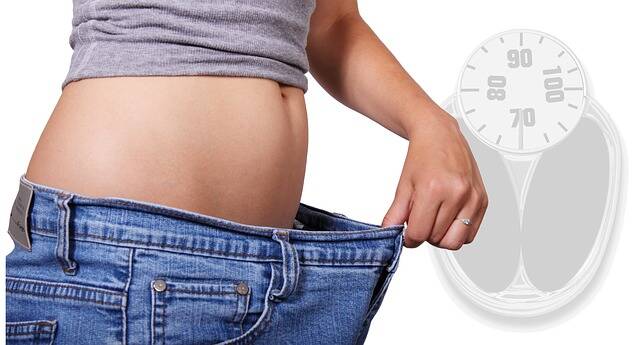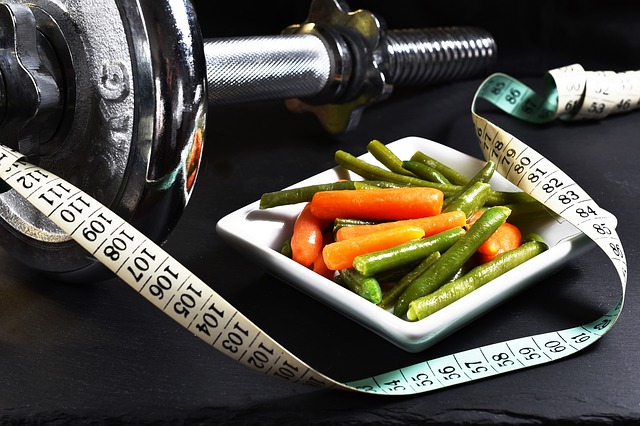- wikiskripta.eu - Lipids
- healthline.com - 19 Effective Tips to Lose Belly Fat (Backed by Science)
- hopkinsmedicine.org - 8 Ways to Lose Belly Fat and Live a Healthier Life
- webmd.com - The Truth About Belly Fat
How to lose weight and fat loss?

How to burn body fat? Is it possible to lose a few kilograms every time you need it? Would you like to lose weight from your belly? The answers are simple. However, the realization is conditioned by the will to achieve the given goal.
Article content
Burning fat is conditioned by biochemical processes in our bodies. Figuratively speaking, to burn something means that it needs to be fueled to burn better. But in this case, it's not true that it will be food. Weight loss is closely linked to fat loss. So let's break them down a bit to start.
Fats
Fats or lipids can be of plant or animal origin. They are substances insoluble or slightly soluble in water. In the human body, they are involved in the construction of a large number of structures. They accumulate in adipose tissue.
Fat cells are called adipocytes. They are the basic building blocks of adipose tissue. They occur either singly or in small groups. They have the ability to form or store fat.
Adipose tissue is made up of adipocytes, or fat cells. It's a reservoir of energy. There are two types of adipose tissue. Brown and white.
Brown adipose tissue makes up only a small percentage of our body. It is found mainly in newborns, where it makes up about 5% of their total weight. It is mainly located in the back and shoulders. In adults, it is in the chest and neck. In obese people, it can be so reduced that it is absent altogether.
White adipose tissue makes up about 20% of body weight. In people suffering from obesity it is up to 50%. Its cells are among the largest in the human body. White adipose tissue serves as thermal insulation and protection for internal organs. However, its main function is that it serves as an energy reservoir.
Functions of fats in the human body
Fats perform a number of functions in the body. Compared to carbohydrates or proteins, they are the most energetically valuable.
The biological functions of fats are:
- storage - source of energy
- building - part of biomembranes
- protective - fat tissue protects internal organs from mechanical damage
- thermoregulatory - protects against low temperatures
- serves as a solvent for lipophilic vitamins A, D, E, K
In men, fat makes up about 15% of the total body weight. In women, it is about 20 to 25%.
Fats as part of the diet
The human diet must be balanced and contain all the components. As far as fats are concerned, it should contain about 25 to 30% of them in its daily intake. Its total intake depends on the sex, weight, age and physical activity of the individual.
With an energy intake of 8700 kJ per day, fats represent 70 g.
They are the most efficient source of energy. Compared to carbohydrates, they have about twice the energy value. In excess, they are stored in adipose tissue.
Their deficiency in the body causes poor absorption of lipophilic, i.e. fat-soluble, vitamins and related complications. These are vitamins A, D, E, K.
Excess dietary intake of fats causes:
- excessive fat storage in the body and the development of obesity
- increased risk of cancer
- impaired immunity
- hormonal fluctuations in the body
- Increased cholesterol intake, leading to the development of atherosclerosis, CHD or coronary artery disease
Storage of fats in the body
Genetically speaking, women have a greater potential for fat storage than men. This is mainly to give them somewhere to draw energy from during pregnancy or breastfeeding.
Thanks to oestrogen, the female sex hormone, they store fat mainly in the thighs, hips and buttocks, i.e. in the lower parts of the body.
For men, it's mainly the abdomen. That's where the problem arises.
When obesity develops, fat is more likely to be deposited in the abdomen than in other parts of the body. We're talking about what's known as male obesity. When fat is deposited in the pancreas and the liver instead of in the subcutaneous tissue, it begins to be deposited in the internal organs.
This condition already causes health complications. High blood pressure, high cholesterol, diabetes or cardiovascular disease.
Energy balance
It is important to know that weight loss is not just about fat. If we want to make our metabolism work properly, we must try to have an energy balance.
The thermodynamic law of conservation of energy applies here. Energy does not disappear during conversion, it only changes its form.
Energy balance therefore means that energy intake is equal to energy output.
And we are at the root of the matter.

The answer is theoretically yes, but practically it is more difficult. Calculating how much energy we have taken in is easier than figuring out how much we have consumed.
The good news is that it can be done without counting. The condition remains, however, that a complete change of lifestyle is required.
If the amount of energy taken in by food is the same as the amount of energy given out by the body, body weight does not change. This is the ideal state if you are at your ideal weight.
When energy intake begins to exceed energy output, body weight increases. This is true provided that the food taken in is perfectly processed and absorbed into the body. In this case, there is a positive energy balance, in which case body weight increases.
If the energy gained from food is less than the energy expended, we are talking about a negative energy balance. In this case, energy is gained through catabolism, i.e. the breakdown of fat, glycogen and protein. Body weight therefore decreases. There you have it!
But where to start?
Appetite
In the animal kingdom, it is very tightly regulated and it is really only rarely that obesity or malnutrition can occur.
But there is a problem. This rule does not apply to humans and some domesticated animals. Even the most innocent creatures have been taught our habits.
In order to maintain basic life functions, we need to take in approximately 8400 kJ (2000 kcal) per day. However, it all depends on the energy requirements of the individual. These are determined by lifestyle and level of physical activity. That is, energy expenditure.
When working more mentally than physically and in a sedentary job, a person needs an extra 2100 kJ (500 kcal).
With heavy physical work, this increases by up to 12550 kJ (3000 kcal) per day.
Children, because of their smaller body weight, do not need to take in such a large amount of energy. However, a relatively higher volume is required for the needs of physical development.
Fat burning or metabolism
metabolism involves all energy transformations after food has been digested in the body.
Energetic substances such as proteins, fats and sugars are broken down to release energy. They are transformed into two forms: heat, which is used to maintain the stability of the internal environment, and chemical energy, which is used in various biological functions.
A living organism oxidizes these energy substances. During this decomposition, carbon dioxide, water and energy are produced. This chemical process is called catabolism.
The opposite of this is the process of synthesis, i.e. merging. In this process, complex molecules are formed from simple basic substances. Energy is not created but consumed. It is the process of building new structures in the body, such as muscle tissue. It is called anabolism.
Basal metabolism
Basal metabolism corresponds to the smallest amount of energy needed to provide energy for the life processes in an organism. It is the amount of energy needed to cover the functionality of the organism under basic conditions. These basic (basal) conditions are:
- an alert state of mental and physical rest in the supine position
- post-absorptive state 12-18 hours after the last meal
- thermoneutral zone (room temperature at which metabolism is not significantly affected)
Even under these conditions, basal metabolic rate is difficult to determine. In this case, it is really just an expression of the lowest amount of energy expended to maintain life processes in the awake state, at normal body temperature and appropriate ambient temperature.
The lowest level of metabolism is during sleep.
Metabolic level
The level of metabolism can be assessed by the amount of energy released in the body during catabolic processes. This energy is needed to digest ingested food, to maintain the body's bodily activities, physical activity and thermoregulation.
Metabolism is influenced by a number of factors.
Age
The level of metabolism increases with age only in the first 3 to 6 years of life. It gradually decreases in the later years. Of course, its rate can be influenced by other factors.
Gender
Women have more adipose tissue and less muscle tissue. Their basal metabolic rate is 5 to 7% lower than that of men, at any age. Since the metabolic activity of adipose tissue does not reach that of muscle tissue, the average metabolic turnover is lower in women.
This is also an important finding in the weight loss process. Because it applies to all persons with a high percentage of adipose tissue compared to muscle tissue, regardless of gender.
Body surface
In healthy individuals, the basal metabolic rate per m² is the same under the same conditions. A person with a larger body height and weight has a higher basal metabolic rate. This is due to the fact that his body surface is larger than that of a short and lighter person. However, we must not confuse a larger person with an overweight person.

Our tip.
Muscle activity
It is the factor that affects the level of metabolism the most and most significantly. Because during physical exertion, i.e. muscle work, oxygen consumption increases. Since the body has to compensate for the oxygen debt, this oxygen consumption is higher long after the physical work is over.
The level of metabolic processes is directly dependent on the amount of physical exertion.
Food processing
After eating food, metabolism increases significantly. This increase depends on its specific-dynamic effect. It is actually the energy expended for its digestion, absorption and transfer of individual nutrients.
Proteins have the highest specific-dynamic effect, increasing the basal metabolic rate by up to 30%. On the other hand, sugars and fats only increase this rate by 5-10%.
However, the amount of energy provided by these substances is reduced by the values required to process them. This means that proteins do not have as high an energy value as sugars and fats. This means that a lot of energy is needed to digest them. Fats and sugars provide the most energy for the body.
Temperature
If the outside temperature is lower than the body's temperature, thermoregulatory mechanisms are mobilized. This results in muscle trembling, muscle movement. This increases metabolism.
This is true even if the ambient temperature is higher or the body temperature is higher. A 1°C increase in body temperature speeds up metabolism by 10 to 13%. Conversely, a decrease in body temperature also results in a slower metabolism. Cells consume less oxygen than at normal temperature.
Hormones
Basal metabolic rate is increased by thyroid hormones and catecholamines. Catecholamines are hormonal substances produced in the adrenal medulla. They include adrenaline, noradrenaline and dopamine. Their basic properties are that they raise blood pressure and increase heart rate.
Their effect on metabolism is that they are flushed into the body, for example, during stress or nervous tension. This increases muscle tension even at rest and increases basal metabolism. When thyroid hormone production is increased, metabolism increases, and conversely, when production is decreased, metabolism decreases.
Read more about thyroid problems in our magazine article.
Other factors
Metabolism is also increased in conditions of the body when the demands on oxygen consumption are increased. These are, for example, periods of pregnancy or breastfeeding. The level of basal metabolism is also increased by the action of chemically active substances. For example, caffeine, amphetamines and others.
How to burn fat effectively?
The basis for accelerating metabolism is muscle work. However, not just work as such, but regular physical activity, which disrupts the constancy of the internal environment, that is, homeostasis.
How to ensure this?
By regular training that goes beyond our physical, and thus mental, comfort.
It is fine if one moves and plays sports. But the important thing is that the movement and training must be aimed at achieving a certain goal. It must be adapted to it.
Fat loss is linked to oxygen intake. Unlike burning sugars, this is not possible without oxygen intake. Therefore, if we want to use fat energy efficiently, we need to engage in longer and less intense activities.
Energy metabolism during physical activity
There are three systems.
The anaerobic alactate energy system. This occurs during physical exercise of an explosive nature. Then a large amount of energy must be released in a short period of time. This system is consumed in 10 to 15 seconds of intense exercise. Creatine phosphate is used to restore energy in the form of ATP adenosine triphosphate. The whole process occurs in the absence of oxygen supply to the working muscles. This means that we do not burn much fat during such activities.
It's mainly used by white, fast-twitch muscle fibres, which have a smaller vascular supply. They use anaerobic energy stores to work, so they're bulkier and stronger.
The anaerobic glycolytic lactate energy system. The body uses it during high-intensity exercise lasting from 30 seconds to 3 minutes. It occurs when there is insufficient oxygen supply to the muscles. The source of energy recovery in the form of ATP (adenosine triphosphate) is sugars. These are stored in the liver and striated muscles.
The aerobic energy system. It is used in exercise or activities of moderate to low intensity. The activity must last more than 30 minutes. This is the case, for example, in endurance running. The energy supply is provided by oxygen. Sugars and fats are used as energy sources.
It is used by the red, slow-twitch muscle fibres. These have a rich vascular supply. They are less bulky and are not well equipped for strength. The energy is replenished by oxygen and does not tire as quickly as the white fibres.
It is important, therefore, to do physical activity of moderate or moderate intensity for no less than 30 minutes. Only after about 25 minutes of this activity does the body begin to meet the body's energy needs through the aerobic energy system. During this, as described above, fat is broken down.
Training for fat loss
To begin with, the absolutely most important thing. Before you embark on any physical training, see your doctor. Inform him or her of your weight loss intentions. Let him or her determine your health status and possibly refer you for any further necessary examinations.
Aerobic training is the best. It is one that is done in an aerobic mode or zone. These are physical activities in which the body uses the aerobic energy system. These are moderate or low intensity exercises lasting more than 30 minutes. Thus, they are more like endurance or strength endurance activities.
Why more than 30 minutes? Because the aerobic energy pool is activated after about 25 minutes of continuous exercise.
The best such activity is endurance running. Cycling is also good to start with, especially for more obese people. It does not put as much stress on the joints of the lower limbs, but after time and weight loss it is better to switch to running.
Running involves more muscle groups. The more muscles working at once, the more energy is used.
Of course, there is a large number of other physical activities that can be carried out. However, the rule should be observed that they should be implemented in the aerobic zone.

How do we know that we are exercising in an aerobic regime?
The best tool is to use a sporttester. That is, a watch that can measure our heart rate.
We calculate our maximum heart rate.
This is done by subtracting your age from the number 220 and dividing by the percentage of your exercise level for that training band.
The result will be the heart rate we need to achieve for that type of workout. We need to approximately maintain this rate throughout the workout.
In the table below we list the training bands in relation to the maximum heart rate
| Maximum heart rate volume | Training band | Focus of physical activity |
| 50 % | Aerobic band | Movement for health |
| 60 % | aerobic zone | weight control |
| 70 % | aerobic-anaerobic zone | fitness development |
| 80 % | anaerobic zone | performance enhancement |
| 90 % | anaerobic zone | competitive load |
For example, if a 35 year old wants to reduce his weight, he will calculate the heart rate level at which he will train as follows:
220 - 35 x 0.6 = 111 heartbeats per second.
The disadvantage of such training is that it is monotonous and involves the same muscle groups over and over again. Therefore, we should be more creative and vary not only the rhythm of the training but also the muscle groups exercised.
It is necessary to include strength training in your program. Larger muscles need more energy to work, which the body gets from sugar and fat. After all, we do not need to weaken the body by losing weight, but to strengthen it.
Read the article on how to create your own training plan.
You need to exercise regularly. At least 3 times a week. Physical activity speeds up the metabolism. It's best to combine endurance training with strength training, or alternate them. Because fat is burned in the muscles. So if we want to get rid of it, we need to get as many muscles moving as possible.
To make it less strenuous, there is a type of training that combines both requirements.
The best combination for this type of exercise is high-intensity interval training. From the English acronym HIIT (high intensity interval training). It is effective for speeding up metabolism and burning fat. High-intensity exercise causes the body's homeostasis to be disrupted so much that fat is still burned for several tens of hours after the workout.
It is a type of interval training, which is based on the principle of short periods of exercise interspersed with small rest phases. Exercises using the body's own weight can be used as the strength component of this training. For example, so-called push-ups or squats.
The alternation of full load phases with rest phases or light load phases is the main purpose of this training. It causes us to switch on the engines full blast, so to speak, in the transition phase to high intensity exercise. This is when we consume the most energy.
The more often we change the intensity of the load, the more energy we use.
It is more efficient than, for example, monotonous running on a treadmill. If anything, it is good to vary the intensity when running. You can alternate high-speed sections with slower sections. This training does not take too much time, so there is still room for other physical activities afterwards. It is up to you how strong your desire to achieve your goal is.
In one HIIT workout, you can use more than one exercise or perform only one. However, it is better to move more muscle parts.
In the table below we show an example of an interval workout
| Phase | Workout |
| Week 1 and Week 2 | 10 sets: 15 seconds of high-intensity exercise interspersed with 1 minute of rest or low-intensity exercise |
| Weeks 3 and 4 | 10 sets: 30 seconds of high-intensity exercise alternating with 1 minute of rest or low-intensity exercise |
| Weeks 5 and 6 | 11 sets: 30 seconds of high-intensity exercise alternating with 30 seconds of rest or low-intensity exercise |
| Weeks 7 and 8 | 25 sets: 30 seconds of high-intensity exercise alternating with 15 seconds of rest or low-intensity exercise |
For starters, it's better to just rest during the breaks. Choose simple exercises like squats, push-ups, sit-ups, etc. Alternate between them. It's okay if the same exercises are repeated several times during the workout. When you've completed the entire 8-week cycle, you can continue by doing low-intensity exercises during the breaks instead of resting. For example, jump rope jumps and the like.
For example, you can shorten the break time or add more strenuous exercises later. Or increase the intensity of the workout by adding weight exercises.
However, with this type of training, you will no longer be training in the aerobic zone. For its high intensity, the volume of the maximum heart rate will be at least 70%. However, this does not matter at all. The effect of such training is high.
So how to lose weight?
The basic rule is that the energy expenditure should be higher than its intake.
However, this is not possible without physical activity.
It is more convenient, but it does not lead to anything. It is necessary to adjust the diet. Not only its quantity, but also its quality. Absolutely ineffective are various diets without increasing physical activity.
Starvation does not solve anything, it makes things worse.
It may lead to weight loss, but with insufficient food intake, the body starts to stockpile what little it gets. It starts to store fat. The so-called yo-yo effect sets in. Not to mention how much of a negative impact some drastic dietary changes have on a person's health.
Is it possible to lose weight just from the belly?
The goal of people is to have a good figure. If you lose weight only from the abdomen, then what about the other parts? It cannot be said that such a figure would look good.
The fat is deposited in different parts of the body in a certain sequence and in the same way, but in the opposite order, it is also lost from these parts. In men, it is mainly deposited on the abdomen. In women, it is deposited in the thighs and buttocks. Of course, no one leaves out other parts of the body.
So the answer to the question is: no, you can't lose weight from the belly alone. But it's a good thing that with the same effort, fat doesn't disappear only from the belly, but comprehensively from all areas of the body.
Lifestyle change is important for weight loss. After achieving positive results, it is important to stay with what helped us achieve them. Going back to the old and then starting over again sucks.
Interesting resources










